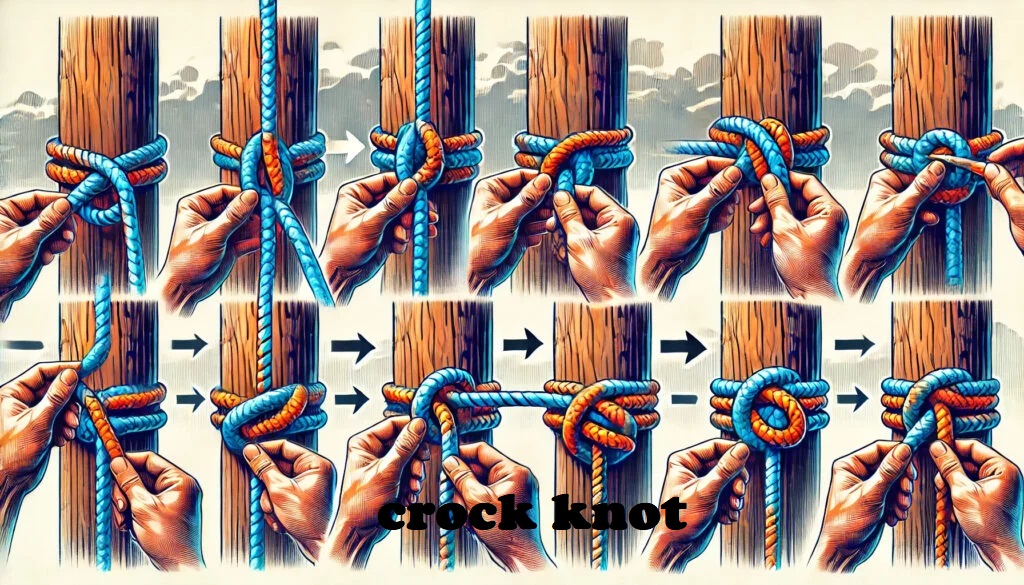Introduction to the Crock Knot
If you’ve ever found yourself in the great outdoors, tangled up in fishing lines or struggling to secure gear, you know how vital a good knot can be. Enter the crock knot—a versatile and reliable choice that’s gained popularity among outdoor enthusiasts. But what exactly is a crock knot? This handy little tie has roots that stretch back through history and finds its place not just in fishing but also in various practical applications. Whether you’re an experienced angler or just someone who enjoys spending time outside, understanding this knot could make your adventures smoother and more enjoyable. Let’s dive into everything you need to know about the crock knot!
History and Origins of the Crock Knot
The crock knot has a fascinating history that traces back to various fishing communities. It is believed to have originated among anglers seeking reliable ways to secure bait and catch fish.
As fishing techniques evolved, the need for effective knots became essential. The crock knot emerged as a practical solution, allowing fishermen to tie hooks securely while maintaining easy adjustments.
While its exact origins are somewhat murky, many attribute its popularity to specific regions known for their rich fishing traditions.
Over time, this knot gained recognition beyond traditional uses and found applications in outdoor activities like camping and climbing. Its versatility made it an invaluable tool across different disciplines.
The simplicity of the crock knot is what endears it to both novice users and seasoned experts alike. Each generation has passed down knowledge about this handy knot, ensuring it remains relevant today.
How to Tie a Crock Knot
To tie a crock knot, start with two lengths of rope or cord. Lay one over the other to form an “X” shape.
Take the end of the top line and wrap it under the bottom line. Pull it through to create a loop on one side.
Next, take the end of the bottom line and bring it up through that loop you just made. This secures your first layer.
Now, for added strength, simply repeat this process once more. Wrap and pull until both ends are snug but not overly tight.
Make sure your lines are aligned properly before finishing off with a firm tug on each end. Adjust as needed to get everything neat and tidy.
Your crock knot should now be ready for action—reliable yet easy to untie when necessary!
Popular Uses for the Crock Knot
The crock knot is a versatile tool in various fields. It’s often favored by anglers for securing hooks and lures. This reliability makes it essential for any fishing enthusiast.
In camping, the crock knot shines as well. It holds tarps and tents securely against unpredictable weather conditions. Campers appreciate its strength when setting up their sleeping areas.
Boaters also benefit from using the crock knot to attach lines or secure gear on board. Its ability to hold under pressure ensures safety while out at sea.
Craft enthusiasts have discovered innovative uses too. The crock knot can create unique designs in macramé projects or decorative items, adding flair without compromising strength.
Whether you’re outdoorsy or crafty, the crock knot proves its worth across multiple activities, making it a go-to choice for many enthusiasts.
Variations of the Crock Knot
The crock knot has inspired several variations that cater to different needs. One popular adaptation is the double crock knot, which offers enhanced security. It employs an additional wrap around the standing line, making it ideal for heavy-duty applications.
Another variation is the quick-release crock knot. This version allows users to untie it with ease when needed, perfect for situations where swift action is essential. Fishermen often appreciate this feature during catch-and-release practices.
There’s also a decorative variant known as the braided crock knot. Craftspeople use this aesthetically pleasing twist in jewelry-making or macramé projects. Its intricate design adds flair while maintaining functionality.
Each variation brings unique benefits, depending on your specific requirements and preferences. Exploring these options can enhance your knot-tying skills and broaden your toolkit.
Advantages and Disadvantages of the Crock Knot
The crock knot offers several advantages. Its design ensures a secure hold, making it ideal for various applications in fishing and outdoor activities. This knot is particularly appreciated for its ease of tying, even under challenging conditions.
However, there are drawbacks to consider. The knot can slip if not properly tightened or if used with slippery lines. This makes it less reliable in high-stress situations where maximum strength is crucial.
Additionally, while the crock knot works well for certain uses, it may not be suitable for all scenarios. Some users might find alternative knots perform better in specific contexts.
Understanding both sides helps you determine when to use the crock knot effectively. Weighing these pros and cons allows for informed decision-making based on your unique needs and experiences in the field.
Conclusion: Is the Crock Knot Right for You?
When considering whether the crock knot is right for you, think about your specific needs and usage scenarios. This knot shines in situations where security and adjustability are essential. If you’re frequently working with slippery or slick lines, its gripping ability can be a game changer.
However, it may not be the best fit for every application. For instance, if speed is of the essence or if you’re working in conditions that require quick releases, other knots might serve you better.
Evaluate your activities—fishing, camping, boating—and determine how often you’ll rely on this particular knot. Trying it out during practice sessions will help you gauge its effectiveness firsthand.
Choosing to incorporate the crock knot into your toolkit comes down to personal preference and experience. It’s a versatile option worth exploring as part of your outdoor skills repertoire.




